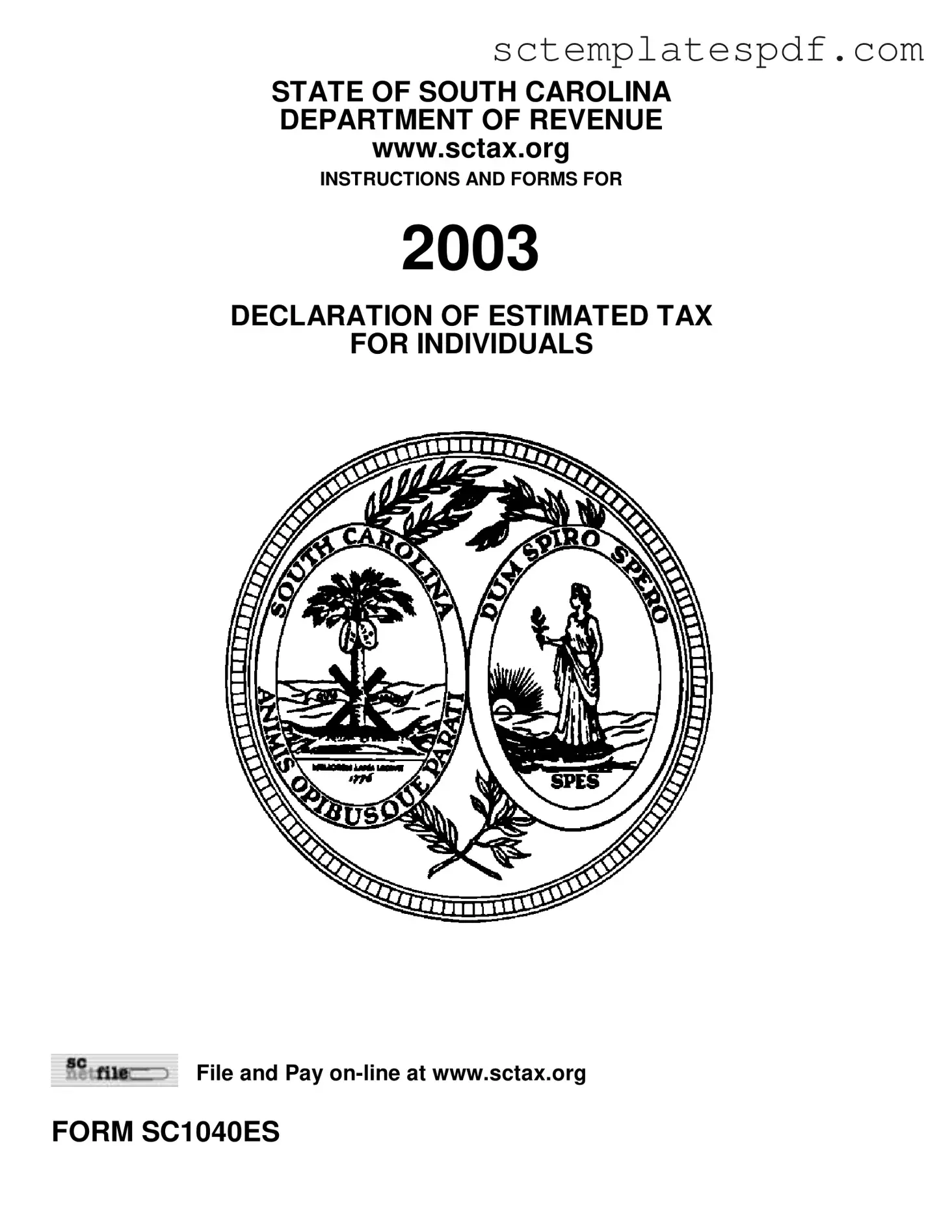The South Carolina 1040ES form is an essential tool for individual taxpayers who need to manage their estimated tax payments throughout the year. Designed for those who expect to owe $1,000 or more in state taxes, this form outlines the specific dates for quarterly payments, which are typically due on April 15, June 16, September 15, and January 15 of the following year. However, certain exceptions apply, particularly for farmers and commercial fishermen, who may have different payment options based on their income sources. Each taxpayer must ensure they file their declaration accurately, as failure to do so can result in penalties. The form also accommodates various filing scenarios, including provisions for joint or separate declarations for married couples. Additionally, if a taxpayer’s financial situation changes significantly during the year, they have the option to amend their declaration. Understanding the nuances of the 1040ES form can help individuals avoid unnecessary penalties and ensure compliance with South Carolina tax regulations.
